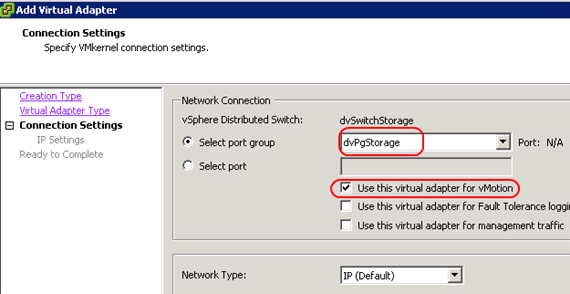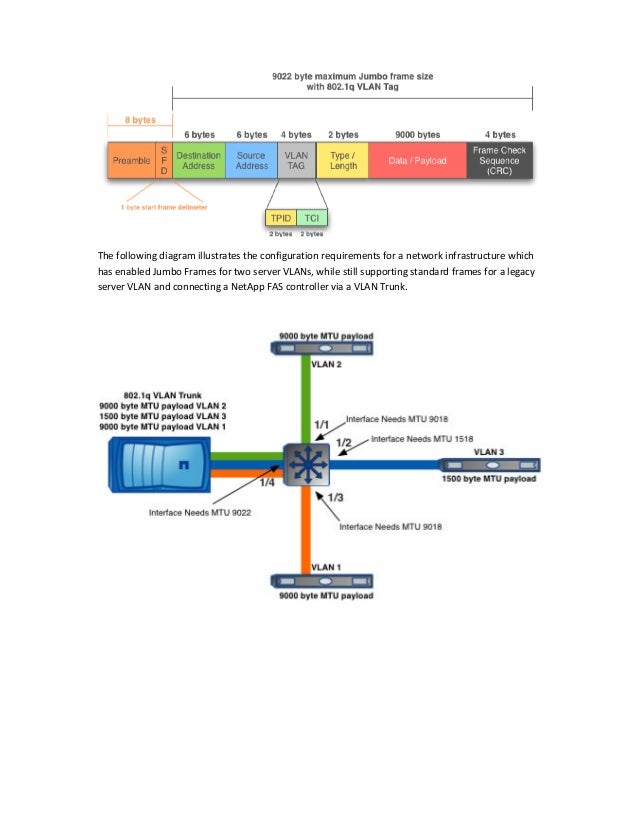Netapp Jumbo Frames Enabled

Jumbo frame is a useful feature with very specific purpose. A few of the common router manufactures allow you to tweak them such as Asus or Cisco. Many of the guides are too complicated for the average users. This easy to understand guide will give you some useful and simple guidelines to start using or decide not to use Jumbo Frames for your network.Please note that this is a general guide that will not go into specifics on how to set it up.
However, it should offer some general and easy to understand insight for the average users to decide whether or not to enable Jumbo frame feature. What is Jumbo FrameJumbo frames improve data transmission efficiency by sending a bigger frame of data instead of the standard one. The standard data frame has 1500 MTU size and the jumbo frame is typically set at 9000 MTU value size when enabled.Jumbo frame improves data transmission in two ways. First each frames sent have “overheads” or information regarding those frame. By sending out a jumbo frame instead of standard, you end up sending out more data with the same amount of overhead.The second way is that by sending a bigger amount of data, the router sends “less” interrupted frames.
This effect improves the CPU usage of the router. Which can improve your network efficiency if your router is already under heavy usage load. When Should You Use Jumbo FrameYou should only use Jumbo Frame feature when you have a network storage attached to your network. For example, you have a external media library where you have stored large chunks of video or image files.
Or if you simply have a external storage where you transfer large files often such as backing up of files on a regular basis. The Basic on How to Set Up Jumbo FrameJumbo frame only works over Gigabit Ethernet over LAN setting. This means that jumbo frame is usually not enabled for wireless connections and it does not directly affect the performance of wireless network.Every single node with a jumbo frame enabled network needs to support jumbo frame. This includes your router, switch, and the end devices such as your computer’s networking cards.
Any node without the correct setup will mot likely hurt your network’s performance than helping.For router settings, you can typically find jumbo frame feature under LAN setting.For switches you need to make sure that the device supports jumbo frame.For your end point device such as PC, you will have to change the networking card setting. Jumbo Frame Pros and ConsPros:The implementation of Jumbo frame can improve the transfer speed of large files. It can indirectly improve the performance of routers by having less “interrupts” of the large transferred files.Correctly setup jumbo frame implementation can generally achieve 2030% additional file transfer throughput, while having other fringe benefits by relieving some workload from overworked routers.Cons:The Jumbo frame’s use is pretty limited to the large files and storage solutions. It is also becoming more of a obsolete options as routers gain more processing capability. The setup can take plenty of tweaking and trouble shooting to make sure that it is working as intended. When a component or a node within the network does not support Jumbo frame, many issues and problems can arise from the setup.These network issues included dropped frame and result in overall lowered performance because of frame re-transmission, When Should Jumbo Frame Be DisabledIn short, jumbo frame should only be ON or enabled when you have implemented some sort of internal network storage solution. It should be disabled where you have any sort of internet access.
Below is a quick reason for each of the general use scenarios.It should be noted that Jumbo Frame can always potentially be indirectly helping these processes if you are running large file transfers at the same time.Jumbo Frame for gaming:Game generally are latency focused and most gaming developers minimize the size of files or packets transmitted. These game related traffic will almost always be much smaller than the standard MTU size. Thus having jumbo frame enabled will not improve gaming performance.This is the case for PC, mobile games, or any consoles including playstation or xbox.Jumbo Frame for Internet Video Streaming or VOIP:Internet video streaming services such as Apple TV, Chromecast, or Roku will generally not benefit from jumbo frame at all. Since these devices by default do not support jumbo frame, so you will end up hurting your performance.VoIP uses will always not benefit from jumbo frame, as VoIP like gaming, is latency and time sensitive.Jumbo Frame for Internet Purpose:You will not see any performance boost as the files that came across the internet does not support jumbo frame. This means that jumbo frame will also not affect any kind of general internet use such as browsing, email, or torrent file sharing.
Netapp Jumbo Frames Enabled Iphone
Jumbo Frame ConclusionsTo summarize this general best practice guide, you should NOT enable jumbo frame feature as a general home user. The only exception to the rule is you should only enable jumbo frame if you are consistently streaming from large media storage library or home backup systems on your network. And even then, the additional improvement in performance may not worth the trouble.
Boudewijn,There are several places you need to set the MTU size of and the max MTU is allowed. Within the UCS system itself, the MTU configuration needs to be done at the FI and vNIC.
The max MTU allowed is 9216 and 9000 respectively. The FI MTU should never be less than the MTU size of the endpoints. Just remember, the FI is a simple L2 device and doesn't do any fragementation. Therefore, it is okay to set the MTU on the FI to 9000 but no harm at setting it at 9216 in case of any padding added by OS, intermediary devices (vFW, vRouters, etc), etc.Hope this helps,David Nguyen. When we setup our environment over two years ago we set it up with the MTU of 9000 in the LAN Cloud QOS System class.
We are a FlexPod reference design, running iSCSI for our VMware storage. This worked fine up until we got new controllers for our cluster mode; FAS8060 with NetApps UTA2 ports.
We were not able to run Jumbo frame storage connections to these. After over a month of troubleshooting, it came down to the UCS Fabric Interconnections were dropping the Jumbo packets.Fix: Change the MTU from 9000 to 9216 in the LAN Cloud QOS System class. Once this was done everything connected and tested fine.Reason: As I understand it, our other controllers used on straight 10GB Ethernet adapters.
However, the new UTA2 adapters on the NetApp are CNA cards and act as FCoE even when running Ethernet only traffic. Because of that there is extra packet header information. This caused the packet to be larger than 9000 and the FI dropped it.As stated above there is a lot of information about Jumbo Frames with the NetApp and UCS with conflicting configurations. We found our original docs used and it had conflicting settings in it as well. However, if you do as mentioned above use the FlexPod reference design it does state to use 9216 for your settings.
Netapp Jumbo Frames Enabled Light

I would say if you are connecting to a NetApp, even if you are not doing a reference design, use the design as a guide for settings.